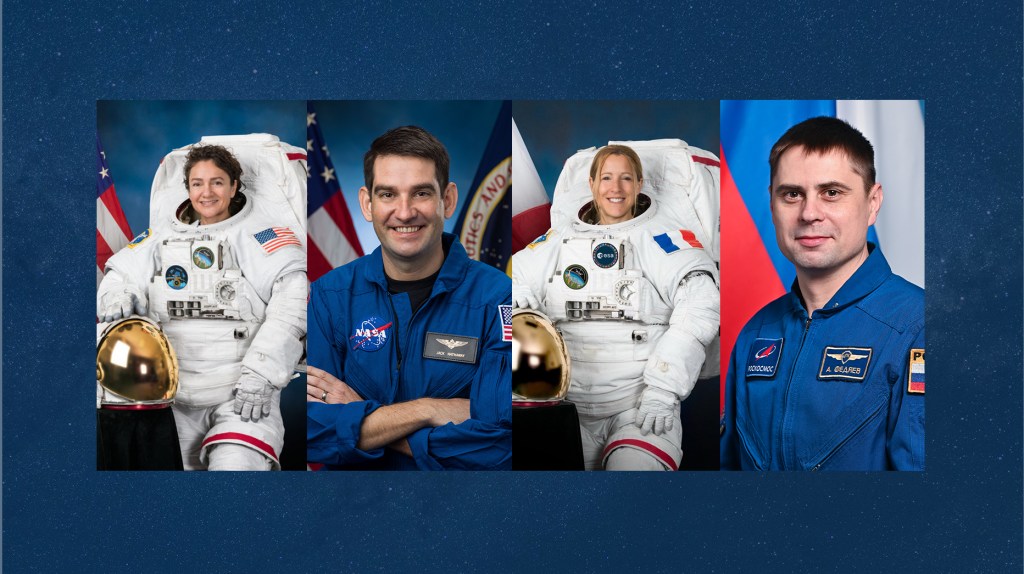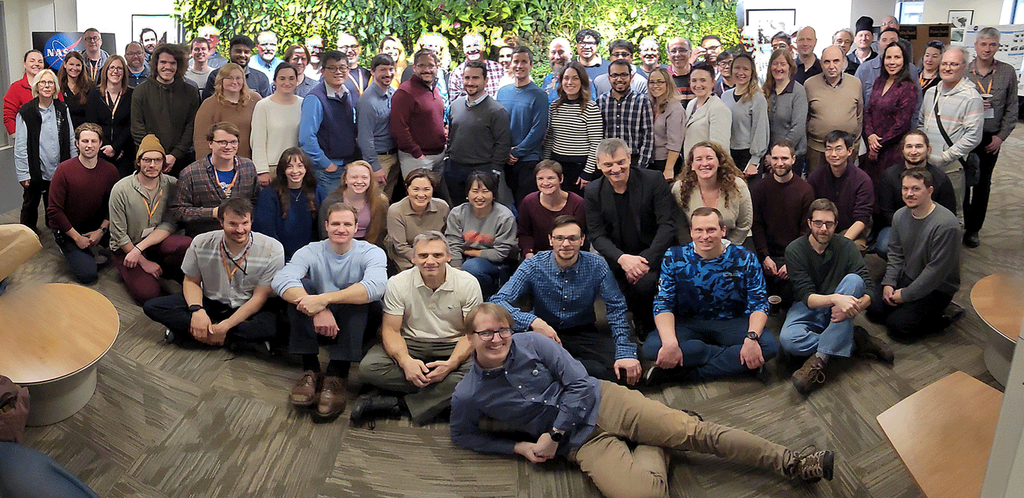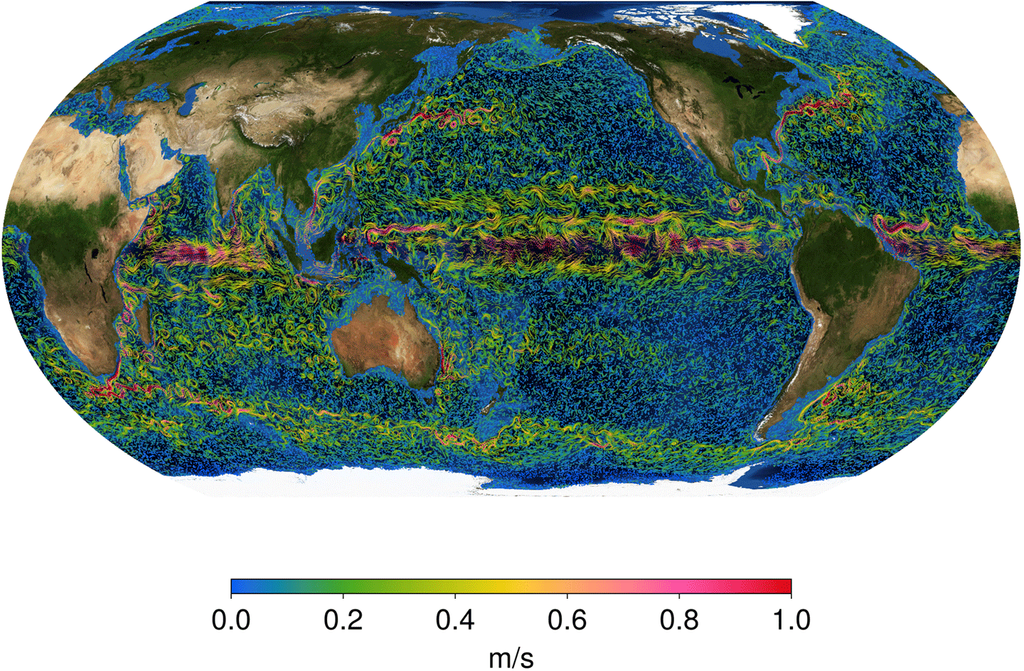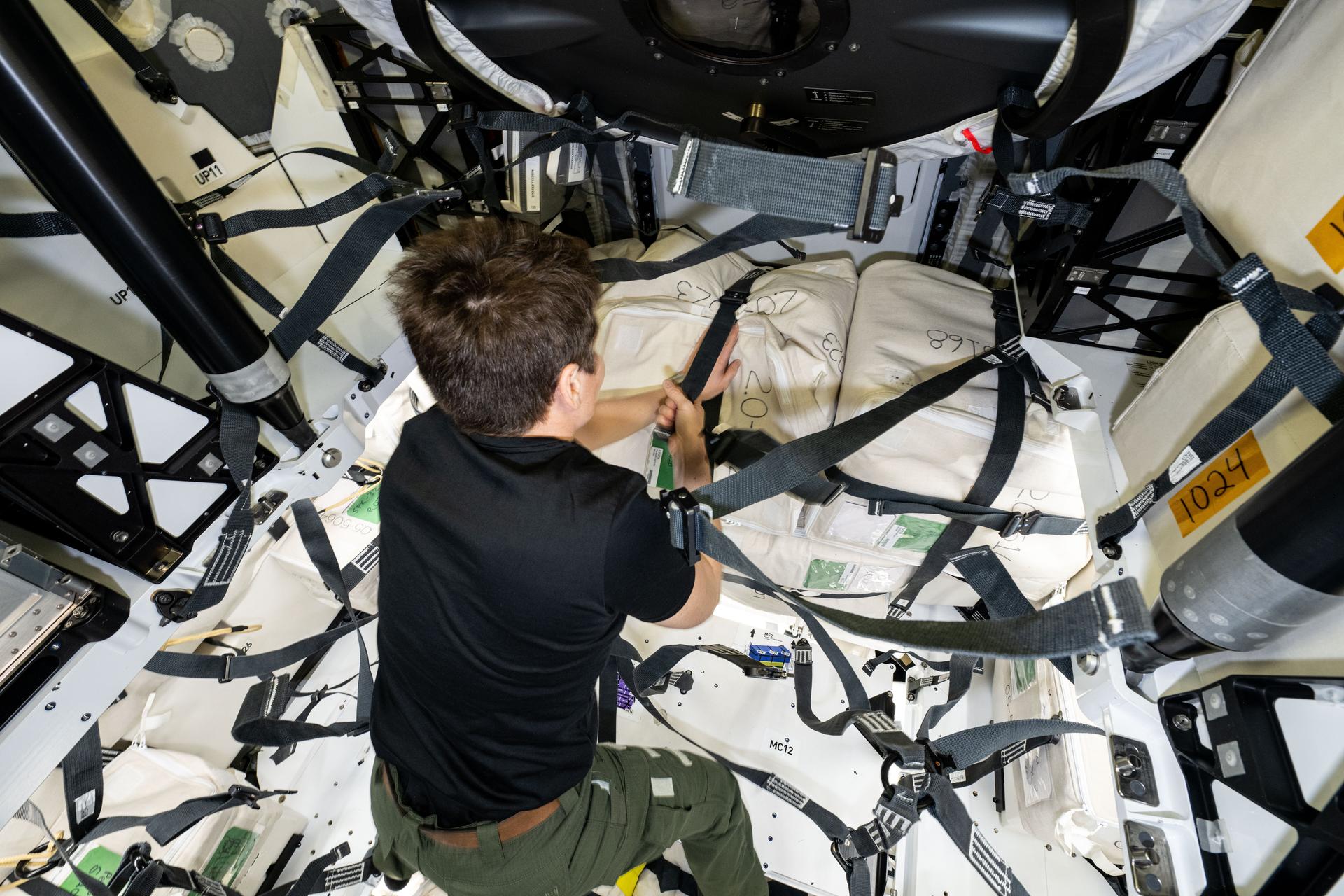Exercise Research, Growing Space Crops, and Science Packing Fill Day
Tuesday saw more space biology work aboard the International Space Station helping doctors learn how to protect health and preserve life in microgravity. The Expedition 73 residents also continued their cargo activities packing a U.S. and a Roscosmos cargo craft before their upcoming departures.
NASA Flight Engineer Nichole Ayers kicked off her shift wearing a sensor-filled vest and headband that measured her physical parameters as she pedaled on an exercise cycle. She was working out for the Cardiobreath human research study that is exploring how an astronaut’s cardiovascular and respiratory systems adapt to weightlessness. The vest and headband are part of the Bio-Monitor medical hardware system developed by the Canadian Space Agency to comfortably monitor crew health as astronauts go about their daily activities. At the end of her day, Ayers photographed genetically engineered, extremely dwarf tomato plants being grown to test their ability to grow without photosynthesis and in confined spaces potentially supporting crop production on spacecraft.
Ayers also joined NASA Flight Engineer Anne McClain and transferred frozen research samples into portable science freezers that will soon be packed inside the SpaceX Dragon cargo spacecraft. McCain also installed EXPRESS rack hardware that houses science experiments and more research samples inside Dragon. The U.S. cargo spacecraft is being readied to end its cargo mission and undock from the Harmony module’s space-facing port at 12:05 p.m. EDT on Thursday. Dragon will parachute back to Earth the following day and return the completed science experiments and space station hardware for retrieval and analysis.
Station Commander Takuya Onishi of JAXA (Japan Aerospace Exploration Agency) started his day inside the Kibo laboratory module photographing microbe samples that decompose organic matter and packing them for stowage inside the homebound Dragon. Afterward, Onishi installed research hardware on a slide table and placed it inside Kibo’s airlock where it will soon be placed in the vacuum of space. Finally, the two-time station visitor collected space radiation-exposed biological samples for return and analysis back on Earth.
NASA Flight Engineer Jonny Kim joined his cosmonaut crewmates Sergey Ryzhikov and Alexey Zubritsky and conducted an emergency drill, locating medical hardware and practicing cardiopulmonary resuscitation (CPR) in the orbiting lab’s weightless environment. The trio launched to the orbital outpost aboard the Soyuz MS-27 crew ship on April 8 from Kazakhstan’s Baikonur Cosmodrome and docked to the Prichal module just over three hours later.
Kim earlier measured sound levels in the space station’s habitable segments then swapped neon gas bottles for argon gas bottles to support the Plasma Crystal-4 space physics study. Ryzhikov and Zubritsky participated in a study exploring ways international crews and mission controllers can improve communications.
Ryzhikov also strapped on sensors at the beginning of his shift for a 24-hour session measuring his heart activity and blood pressure. Zubritsky partnered with Roscosmos Flight Engineer Kirill Peskov and stowed cargo inside the Progress 90 resupply ship that has been docked to the Poisk module since Nov. 23. The Progress 90 is due to take out the trash and end its seven-month mission in early July when it undocks from Poisk and reenters Earth’s atmosphere above the South Pacific Ocean for a fiery, but safe destruction.
Learn more about station activities by following the space station blog, @space_station and @ISS_Research on X, as well as the ISS Facebook and ISS Instagram accounts.
Get the latest from NASA delivered every week. Subscribe here.
































